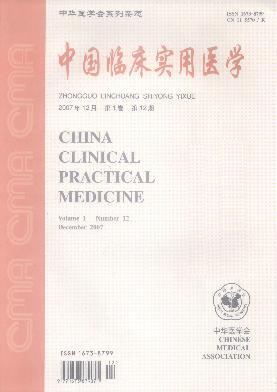The risk factors and bacterial susceptibility analysis of in severe acute pancreatitis complicated with intra-abdominal infections
引用次数: 0
Abstract
Objective The aim of the study was to find out the risk factors of the severe acute pancreatitis(SAP)complicated with intra-abdominal infections according to the retrospective analysis of the clinical data of 280 patients with SAP in Quanzhou First Hospital of Fujian Medical University,and to analyze the bacterial spectrum,drug sensitivity in patients with intra-abdominal infections for clinical diagnosis and treatment. Methods Collected the clinical data of 280 patients,the relationship between the factors which have significant difference in patients complicated with intra-abdominal infections and no intra-abdominal infections patients was explored according to the Logistic regression analysis,and analysized the predisposing factor of SAP complicated with the intra-abdominal infections.The ascite specimens and the necrotic tissues of SAP patients complicated with the intra-abdominal infections were harvested for bacterial culture and drug sensitivity analysis. Results The Multiple organ dysfunction syndrome,seroperitoneum,Ca and intestinal dysfunction were the risk factors of SAP with the intra-abdominal infections,the main pathogenic bacteria was gram-negative bacteria.The top two gram-negative bacteria were Escherichia coli,pseudomonas aeruginosa,and the top two gram-positive bacterium were enterococcus,staphylococcus aureus.They were generally not sensitive to common antibiotics. Conclusion The early therapy of SAP complicated with the intra-abdominal infections should be basd on the risk factors,bacterial spectrum,and drug sensitivity,in order to increase the clinical therapeutic effect. Key words: Severe acute pancreatitis; Intra-abdominal infections; Logistic regression analysis; Bacterial susceptibility testing重症急性胰腺炎并发腹腔内感染的危险因素及细菌敏感性分析
目的通过对福建医科大学泉州第一医院280例重症急性胰腺炎(SAP)患者临床资料的回顾性分析,找出SAP并发腹腔感染的危险因素,对腹腔内感染患者的药物敏感性进行临床诊断和治疗。方法收集280例患者的临床资料,采用Logistic回归分析法,探讨合并腹腔内感染和无腹腔内感染患者中有显著差异的因素之间的关系,分析SAP并发腹腔内感染的易感因素。采集SAP合并腹腔感染患者的腹水标本和坏死组织进行细菌培养和药物敏感性分析。结果SAP合并腹腔内感染的危险因素为多器官功能障碍综合征、腹膜、钙和肠功能障碍,主要病原菌为革兰氏阴性菌。排名前两位的革兰氏阴性菌是大肠杆菌、铜绿假单胞菌,排名前两的革兰氏阳性菌是肠球菌、金黄色葡萄球菌。他们通常对常见的抗生素不敏感。结论SAP合并腹腔感染的早期治疗应根据危险因素、细菌谱和药物敏感性进行,以提高临床疗效。关键词:重症急性胰腺炎;腹腔感染;Logistic回归分析;细菌易感性测试
本文章由计算机程序翻译,如有差异,请以英文原文为准。
求助全文
约1分钟内获得全文
求助全文

 求助内容:
求助内容: 应助结果提醒方式:
应助结果提醒方式:


